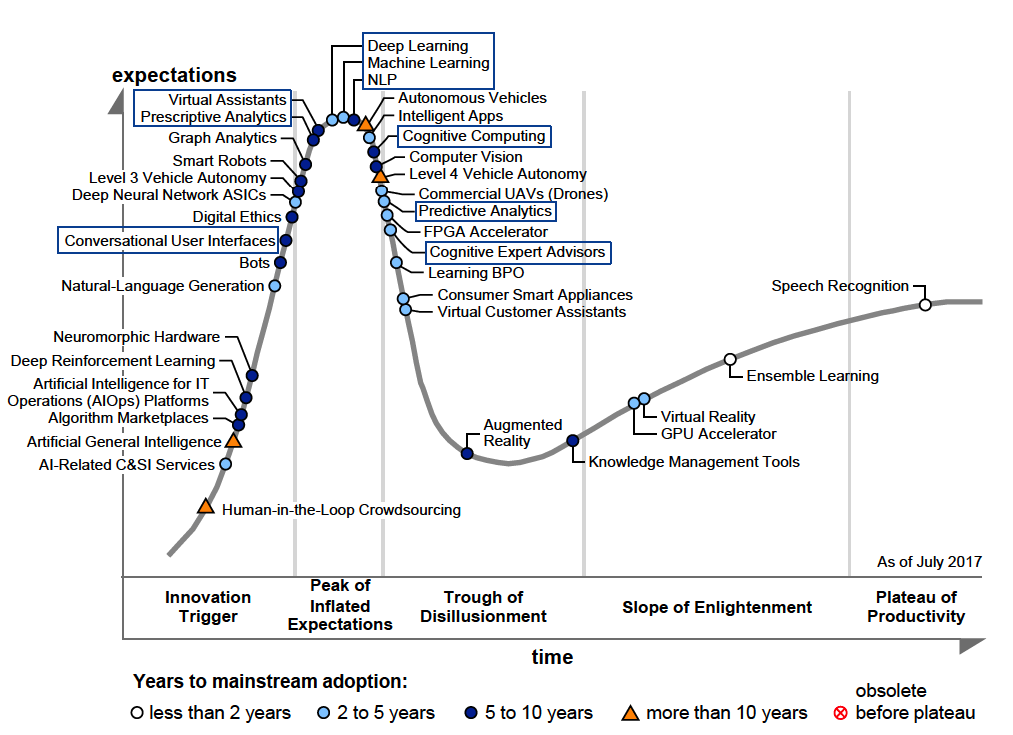2018 was a big year for AI in radiology. The FDA accelerated its clearance process by approving over a dozen medical AI solutions. Tech giants like Philips and GE introduced their own AI technology platforms, promising to address the full process of building, maintaining, deploying and scaling AI solutions. And most importantly, AI is finally becoming real with leading institutions embracing AI by integrating it into their existing radiology workflows.
In 2018, we discussed how AI was still in its early stages for healthcare – provoking fear and a ubiquitous hype that, as of now, is beginning to fade. Now that the relationship between artificial intelligence (AI) and radiology is more commonly accepted, we find ourselves asking ‘what should we expect? Where are we headed – in the near future of 2019 and beyond?
In my opinion, the three major trends that will take hold in the AI-medical imaging ecosystem and into the near future will be (1) the maturation of AI solutions from less artificial to more intelligent (2) a consensus on augmentation, not replacement (3) FDA progress
Here’s my take on what three major trends will arise in the AI-medical imaging ecosystem in 2019.
Less artificial – more intelligent
The conversations that arise out of the annual RSNA meeting are always good indicators of how radiology trends will evolve throughout the next year. RSNA 2018 marked a shift in both tone and style of how radiologists are approaching the concept of artificial intelligence. This conversation has shifted to a more practical stance, that recognizes that AI is here, but seeks to answer a more burning question of ‘What will AI look like in clinical practice, beyond the hype?”
A 2017 webinar hosted by Gartner analyst Laura Craft demonstrated that Machine and Deep Learning were at the top of the ‘Hype Cycle’ for artificial intelligence, with 2-5 years until mainstream adoption. Based upon these insights, 2019 marks a significant peak for the widespread adoption of intelligent AI. In an interview at the RSNA annual meeting, Dr. Paul Chang expanded upon the shifting dynamic stating that we’re “at the highest point on the rollercoaster, just before the drop, where reality sets in.”

Gartner’s “Hype Cycle for Artificial Intelligence, 2017”
The AI ecosystem will continue to be flooded with AI algorithms. The real success lies in those that manage to transform algorithms or ‘models’ into full-fledged intelligent solutions, that provide genuine, proven, clinical value.
This means, that we should expect to see stronger and stronger evidence from those intelligent solutions – peer review papers, customer testimonials and true use-cases where AI impacts the standard of care and the benefits can be clearly measured.
A consensus: Augmenting but not replacing
In a Q4 report published by Signify research, Steve Holloway notes “The fear of radiologists being replaced by AI has subsided (for now), with growing anticipation that AI can instead augment and support radiologists coming to the fore instead,” reflecting on the shifting attitudes of radiologists in the field.
With a growing consensus that the benefits of AI are much greater than the costs, we should expect radiology AI solutions to provide more clinical evidence on how they can augment the radiologist.
There are a few key areas that radiologists are looking to “augment” themselves in. First and foremost, the workflow – meaning any tool that can help improve productivity and assist them in expediting patient care with the rising workload.
Another ripe area for augmentation is quality-based care. Especially with the recent advancements in MIPS, radiologists are striving to find shovel-ready ways to measure quality and increase reimbursement. As one such example, we partnered with SaferMD to provide a complete AI solution that can both improve clinical performance, as well as reward radiologists with higher scores in the Medicare Merit-Based Incentive Payments System (MIPS) while using AI.
Ultimately, it’s about finding those areas where AI can positively impact pain points within the radiologist day-to-day.
FDA progress
Regulatory agencies like the FDA are updating their regulatory frameworks to maintain patient’s priorities on top, while evaluating the interventions of AI technologies. In 2018, the FDA showed greater flexibility by easing the clearance process for AI solutions, allowing them to enter the market more quickly. With more AI clearances than ever in 2018, we should expect increased regulatory clearance for AI-based solutions in 2019 as well. In a speech last year, the FDA commissioner Scott Gottlieb, M.D. stated, “We’re expanding the opportunities for digital health tools to become a part of drug review, to couple these capabilities to drug delivery to form a drug delivery system.”
Recently, he announced that the FDA plans to apply their pre-certification program, a streamlined regulatory process introduced last year, to tools powered by AI. This would allow the FDA to regulate companies, and not just the products, allowing for a more streamlined clearance process.
With these strides, also comes significant challenges. A regulatory framework should be considered as more AI solutions submit multiple products at the same time. Additionally, AI solutions are unique in their ability to continuously evolve and improve. Last but not least, the variability of AI solutions will continue to pose a challenge as real-world evidence hints to the importance of monitoring AI in practice.
Patients could benefit greatly if the FDA would provide a pathway to continuously upgrade solutions on the fly, based on the best available data.
2019: AI is ‘becoming real’
2019 is going to be an amazing year for patients, that will be able, for the first time in history, to experience the full benefits of AI at scale. For us in the AI radiology ecosystem, it’s going to be exciting to see how the market will evolve now that AI becomes more and more integrated into clinical practice, and what kind of new challenges will come from that transformation.
What types of trends do you see evolving in AI for radiology in 2019? I’m happy to hear your feedback in the comments below.







